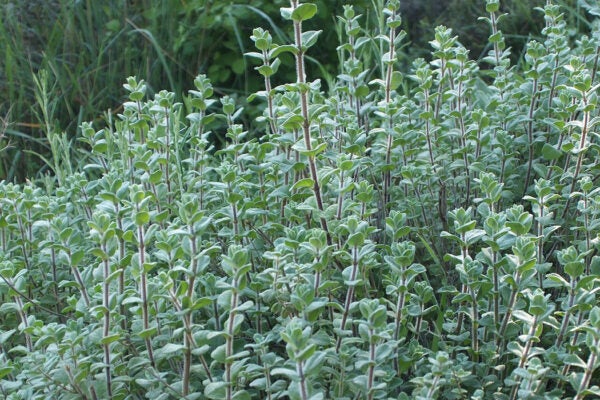Even among spectacular tropical beauties, heliconias stand out. Native mostly to Central and South America, this iconic herbaceous plant has been carried by horticulturalists and plant lovers around the world. Heliconia’s sculptural bracts and stunning colors (reds, oranges, and yellows) have also captivated botanical artists. A painting of two heliconias in the Dumbarton Oaks Rare Book collection by the artist Margaret Mee showcases their distinctive shape and employs the opaque medium of gouache to convey their vibrant color. Mee was intimately familiar with her subject. An artist and an explorer, she undertook fifteen expeditions deep into the Amazon, where she painted several new species of tropical flora, including one variety of heliconia named after her.
Mee’s art is noted for its beauty and accuracy, but her representation of heliconias is in some ways misleading. Her plants look ethereal and delicate, but in nature heliconias are fleshy, powerful presences. Following the convention of botanical art, Mee’s specimens are presented against a neutral background, but in their native habitat they are at the center of complex plant-animal networks. Some, like Heliconia tortuosa, from Costa Rica, are keystone species that provide food and refuge to many animals and establish close, sometimes exclusive relationships with them. These interactions have shaped heliconias: Their color is a signaling mechanism to attract the hummingbirds that pollinate them, while their form is a filtering mechanism that regulates access to their sugary nectar by birds with suitably evolved bills. The elements we admire as aesthetic properties are strategies deployed over long evolutionary timespans to make up for the plants’ incapacity to move, their “sessile lifestyle.” Form and color grant heliconias a measure of control over their environment and especially their pollinators.
Such highly specialized relationships between plants and animals played a key role in the development of Charles Darwin’s ideas on the process of natural selection and evolution and sparked his continuing interest in plants. In his 1880 book, The Power of Movement in Plants, Darwin made the provocative suggestion that the root tip of plants “acts like the brain of one of the lower animals,” receiving impressions from its environment and directing movement. Should we think of plants not merely as the passive beneficiaries of long-term evolutionary adaptations but also as decision makers acting in real time?
An ingenious aviary experiment has shown that heliconias are far from passive. In fact, Heliconia tortuosa has the capacity to distinguish among pollinators and respond selectively to their visits. The researchers observed that some pollinator visits trigger more pollen tube growth, a crucial step in reproduction. They wondered whether this was due to the quality of the pollen or the specific identity of the pollinator, so they collected and painstakingly cleaned 148 different pollinators across six species of hummingbird and one species of butterfly, all of which visit this heliconia. They then let them loose on flowers that had already been hand-pollinated, to level the playing field. After the pollinator visits, flowers were collected and observed under the microscope for pollen tube growth. The experiment revealed that heliconias responded overwhelmingly (by 80 percent) to the visits of two species of hummingbird.
It turns out that the two species of hummingbird with the most highly specialized relationship to Heliconia tortuosa were the most successful. The cue to which the plant responded was their superior ability to extract nectar. These are hummingbirds with longer beaks adapted to the shape of the flowers that also carry the most diverse and therefore desirable pollen from longer distances. This is of genetic value to heliconias, which often grow in clonal clumps. Intriguingly, a third species of hummingbird with a short beak, which gets to the nectar by attacking and damaging the flower from the outside, did not stimulate more tube growth. The researchers noted that this behavior deserves the term of “recognition” because it occurs in ecological time, rather than an evolutionary timescale.
It is now well documented that plants are capable of responding to environmental stimuli through signaling and adaptative behaviors. They use the equivalent of our senses of sight, smell, and touch to identify food, structural support, or competition. They communicate among themselves by biochemical means and via an underground web of mycorrhizal fungi, and they may share resources among kin and even across species. But the step from these signaling and adaptive behaviors to notions of plant cognition or agency has been extremely fraught in the scientific community. Champions of plant neurobiology argue that intelligence exists on a continuum that is not reducible to a central brain and can encompass distributed and networked forms of processing and responding to information. Critics counter that attributions of intelligence to plants are anthropomorphic fallacies in the absence of a brain and nervous system. Meanwhile, experiments to test forms of cognition in plants are, as the above experiment suggests, painstaking and ingenious and we still have far too few of them.
Weekly Newsletter
It is clear that our model of the individual agent exercising rational choice is not transferable to plants. The difference is not just the lack of a brain, but the fact that the influence plants exert on their environment is embedded in a network of complex relationships that are still far from being completely understood. If we reverse the terms of the analogy, perhaps these embedded forms of plant action can enrich our own understanding of human agency within multispecies networks. More urgently, they alert us to the complexity and vulnerability of ecosystems that human activities are impacting at an accelerated pace.
The authors drew two intriguing inferences from their Heliconia tortuosa experiment. The first was that filtering behavior of the sort observed in the heliconia may be a crucial factor in the co-evolution of species within complex pollinator networks. The second was that such close relationships may render these networks more vulnerable to environmental change, for of the many animals that visit Heliconia tortuosa only two are overwhelmingly important to its reproduction. By narrating these interactions and exploring their implications, The Plant Humanities Initiative at Dumbarton Oaks seeks to contribute to our awareness, and hopefully reversal, of environmental degradation and biodiversity loss.






